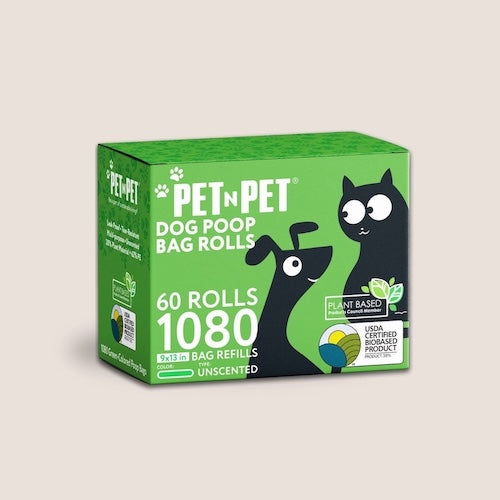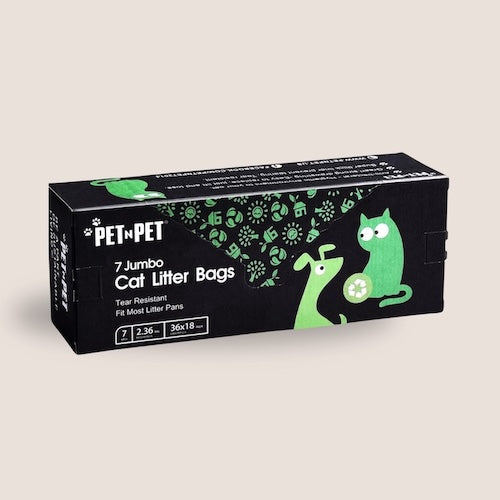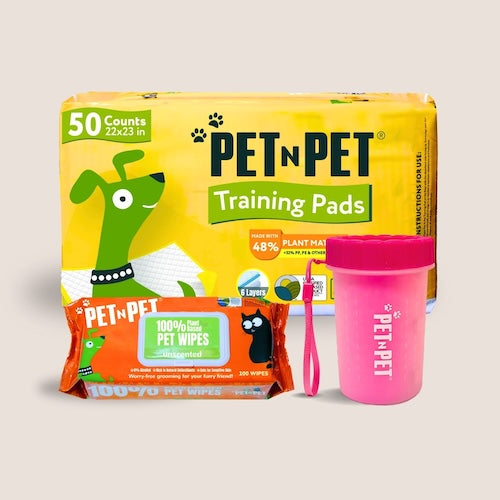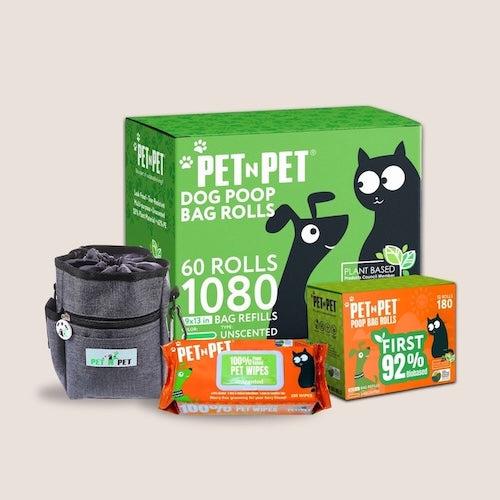
Dog Paw Licking and Chewing: What It Means and How to Fix It
If you’ve ever caught your dog licking or chewing their paws nonstop, you’re not alone — and it’s not always just a quirky habit. While an occasional lick is normal, excessive or sudden paw chewing could signal something more serious.
Let’s uncover the most common causes behind this behavior and how you can help your furry friend feel comfortable again.
1. Simple Grooming Habits
Sometimes, paw licking is just your dog’s way of staying clean. Dogs groom themselves by licking their fur and paws to remove dirt, grass, or small debris.
When it’s normal: Occasional licking on both paws.
When to worry: Constant licking, focusing on one paw, or signs of redness or swelling.
Pet N Pet Tip: Keep a pack of Pet N Pet Grooming Wipes by the door to quickly clean off dirt, dust, or pollen after walks. It’s an easy way to keep paws fresh and reduce over-licking caused by irritation.
2. Allergies
Allergies are one of the leading causes of paw chewing. They can stem from:
-
Environmental triggers such as grass, pollen, or dust
-
Food sensitivities like beef, chicken, or dairy
-
Chemical exposure from lawn sprays or cleaning agents
After outdoor play, wipe your dog’s paws to remove allergens that can linger on the skin. For food allergies, consult your vet to identify safe diet options.
3. Anxiety or Boredom
Dogs may lick or chew their paws as a way to self-soothe when stressed, lonely, or bored. It releases endorphins, providing temporary comfort — but can lead to irritation if it becomes obsessive.
Try these stress-relief ideas:
-
Increase playtime and walks
-
Add puzzle toys or enrichment feeders
-
Spend a few extra minutes of cuddle time each day
A relaxed dog is a happy dog — and calmer pups tend to lick less.
4. Injury or Irritation
Sudden licking may indicate a cut, splinter, or even a bee sting. Dogs instinctively “lick their wounds,” but too much licking can make the problem worse.
Check for:
-
Small cuts or pebbles stuck between paw pads
-
Cracked pads or swelling
-
Signs of limping
If the paw looks inflamed or painful, contact your vet.
For mild irritation, gently clean the paw with Pet N Pet Grooming Wipes and inspect for debris before heading to the clinic.
5. Parasites or Infections
Ticks, fleas, and mites can cause intense itching that leads to obsessive chewing. Similarly, yeast or bacterial infections thrive in warm, moist areas like between paw pads.
Common signs include:
-
Foul odor
-
Redness or dark discoloration
-
Oily or irritated skin
Your vet can prescribe appropriate treatment, but regular grooming and paw cleaning with Pet N Pet Grooming Wipes are your best defense.
6. Dry or Cracked Skin
Cold weather, low humidity, or harsh shampoos can lead to dry, flaky skin — and your dog may lick to soothe the discomfort.
To prevent dryness:
-
Avoid over-bathing (every four to six weeks is ideal)
-
Use moisturizing, pH-balanced shampoo
-
Protect paws with Pet N Pet Grooming Wipes, which gently clean without stripping natural oils
Hydrated skin means happy, healthy paws.
7. Harsh Winter Conditions
Winter can be rough on paws. Ice, salt, and cold pavements can cause cracks, irritation, or even chemical burns.
Before and after winter walks:
-
Wipe paws to remove salt and debris
-
Keep paw hair trimmed to prevent ice buildup
-
Apply a vet-approved paw balm for extra protection
A quick wipe-down after every walk helps prevent irritation before it starts. You can also try the Pet N Pet Paw Cleaner for deep yet gentle cleaning.
Detecting the Warning Signs
Watch for these signs that paw chewing has gone from habit to health issue:
-
Redness or swelling between pads
-
Hair loss or scabs
-
Persistent licking of one paw
-
Limping or sensitivity to touch
If these symptoms last more than a few days, consult your veterinarian to rule out infection, allergies, or injury.
How to Help Your Dog Stop Chewing Their Paws
Here’s a holistic approach to manage the habit:
-
Natural Care: Use soothing, plant-based products like Pet N Pet Grooming Wipes for irritation relief.
-
Routine Grooming: Regularly clean, brush, and check paws to catch problems early.
-
Mental Stimulation: Keep your dog entertained with toys, puzzles, and exercise.
-
Balanced Nutrition: Feed a diet rich in omega fatty acids to promote healthy skin.
With patience, care, and the right routine, most dogs can kick the paw-chewing habit for good.
When to See a Vet
If paw chewing continues despite your best efforts, or if your dog shows signs of infection, pain, or swelling, it’s time for professional help.
Your vet can recommend allergy tests, diet changes, or medications to address the underlying issue.
Keep Every Paw Healthy with Pet N Pet
Excessive paw chewing may look harmless, but it’s your dog’s way of saying something’s wrong. Stay observant, keep those paws clean, and make grooming part of your daily love routine.
Pet N Pet Grooming Wipes are your first line of defense — gentle, plant-based, and perfect for daily use to prevent irritation before it starts.
Pair them with Pet N Pet Poop Bags and Pee Pads to make every cleanup quick, easy, and eco-friendly.
Shop now at Pet N Pet and give your furry friend the comfort they deserve — one paw at a time.






